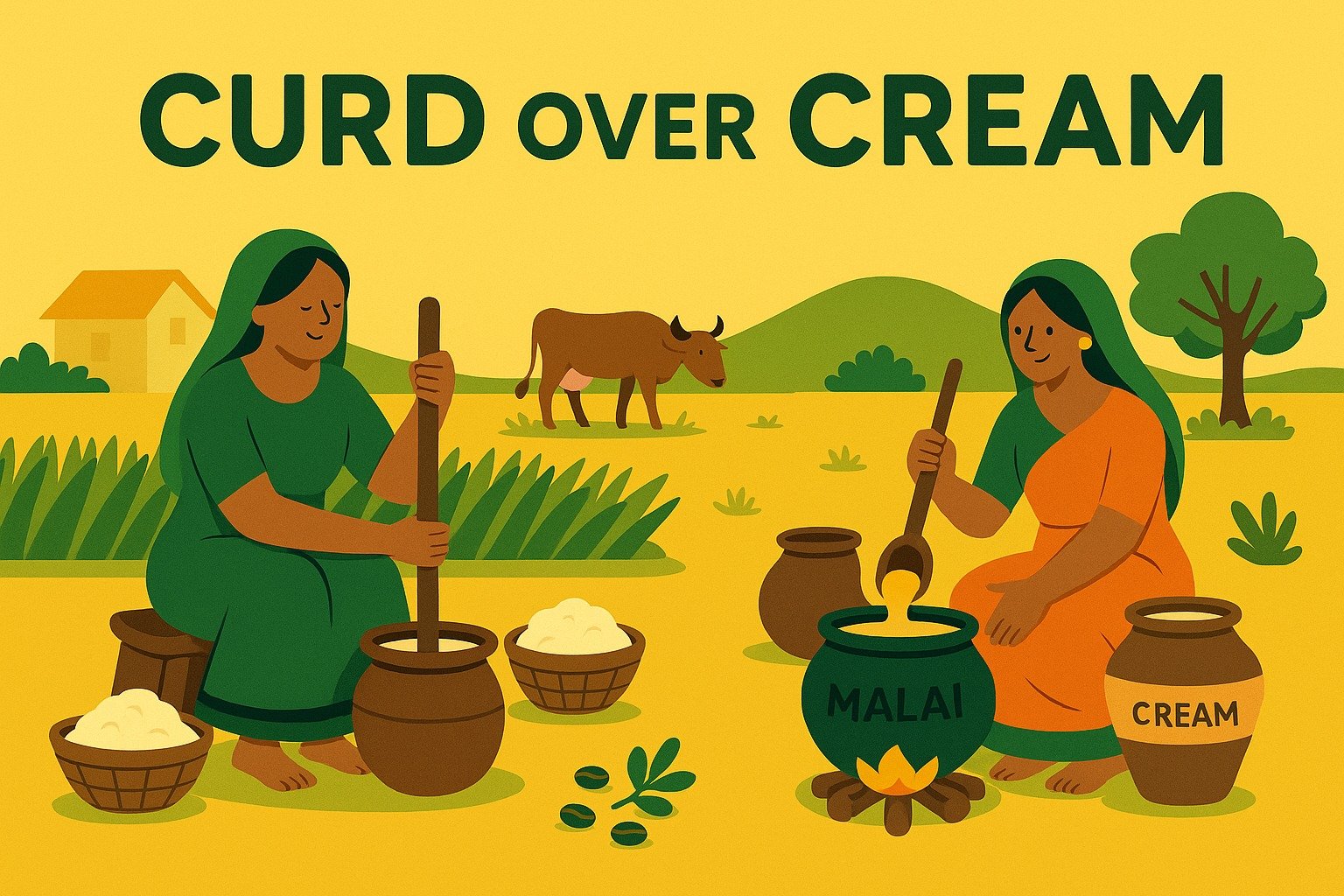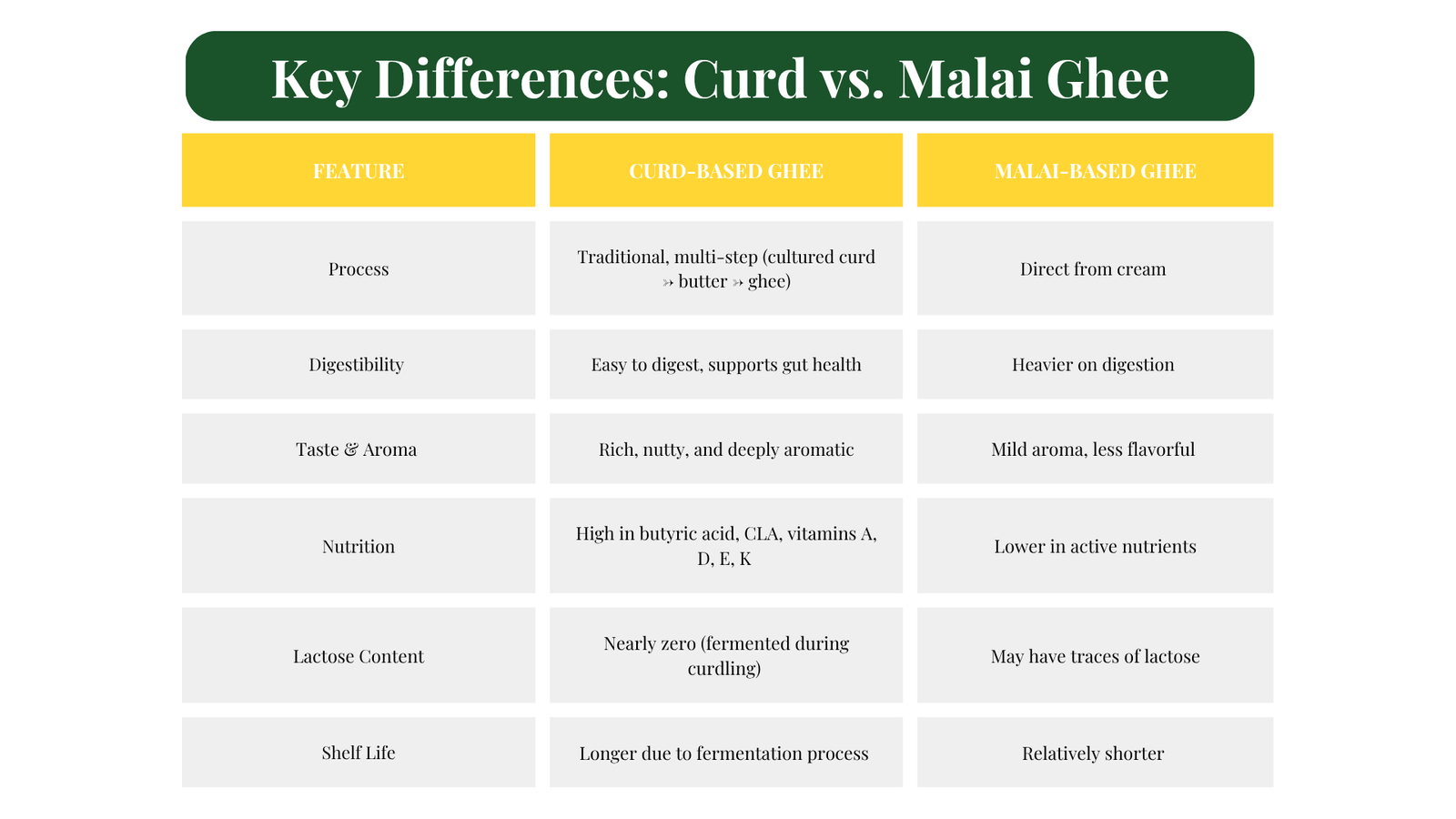
When it comes to choosing pure and nutritious ghee, most people only focus on
the brand or packaging. But what truly defines the quality of ghee is how it’s
made. At Palan Poshan, we believe in going back to our roots — and that means
making ghee the traditional way from cultured curd. But how is it different from
ghee made from malai (cream)? Let’s break it down.
Curd-based ghee, also known as cultured ghee or bilona ghee, is made using the
traditional Vedic process:
1. Whole A2 cow milk is boiled and then cooled.
2. A natural curd culture is added and left to ferment overnight.
3. The curd is then churned (manually or with a wooden bilona) to separate the
makhan (white butter).
4. This makhan is then slowly simmered to obtain golden, aromatic ghee.
Malai-based ghee is commercially made by collecting the cream (malai) from milk,
turning it directly into butter, and then heating it to produce ghee. This is faster, easier, and cheaper, but comes at the cost of nutrition and digestion.

1. Gut-Friendly: Fermentation breaks down lactose and casein, making it ideal
even for lactose-intolerant individuals.
2. Rich in Butyric Acid: Boosts digestion, detoxifies the body, and reduces
inflammation.
3. Boosts Immunity: Supports cell health and immunity due to higher nutrient
bioavailability.
4. Balances Doshas (Ayurveda): Curd-based ghee is considered sattvic and
balances Vata and Pitta.
Here’s how you can spot the difference as a smart consumer:
1 Read the label: Look for terms like cultured ghee, bilona, or curd-churned.
2 Smell & Taste: Curd-based ghee has a deep, nutty aroma and rich taste.
3 Texture: It’s usually grainy and slightly thicker.
4 Melting point: It melts slower and stays solid longer at room temperature.
Our ghee is made from A2 Gir cow milk, fermented into curd, hand-churned, and
slow-cooked — just like our grandmothers did. Every spoon of Palan Poshan
Ghee is a spoon of pure nourishment, tradition, and trust.
If you are looking for 100% pure and natural ghee, you can check out our A2 Gir Cow Ghee for daily health and beauty benefits.
Have questions or want to place an order directly? Connect with us on WhatsApp for quick support.
